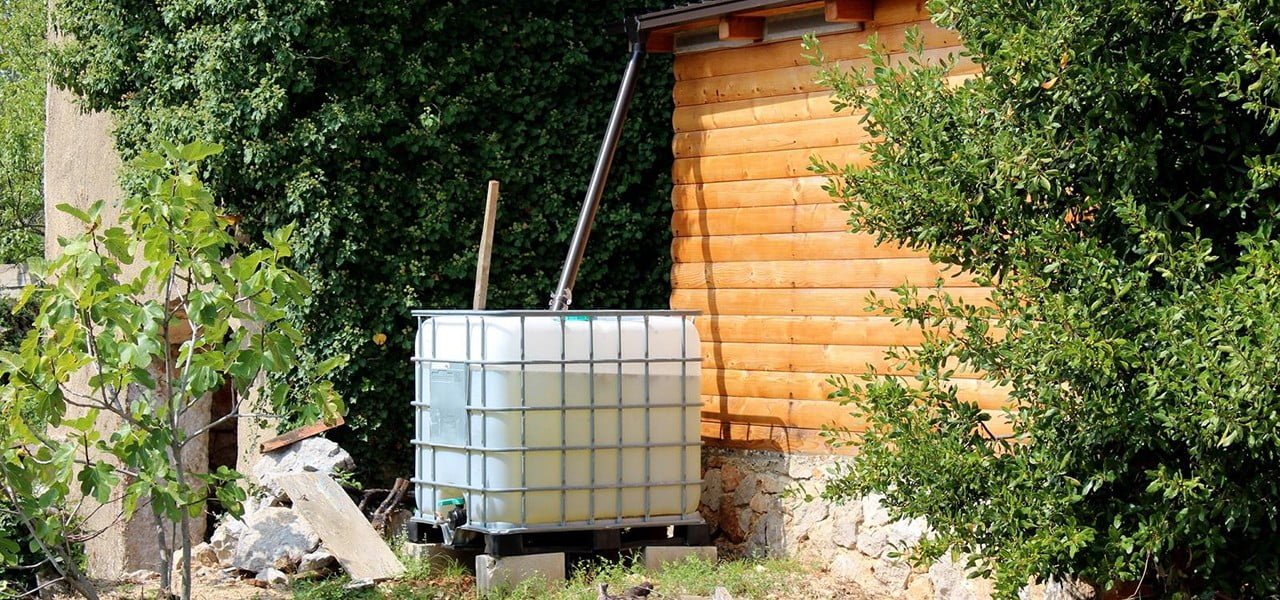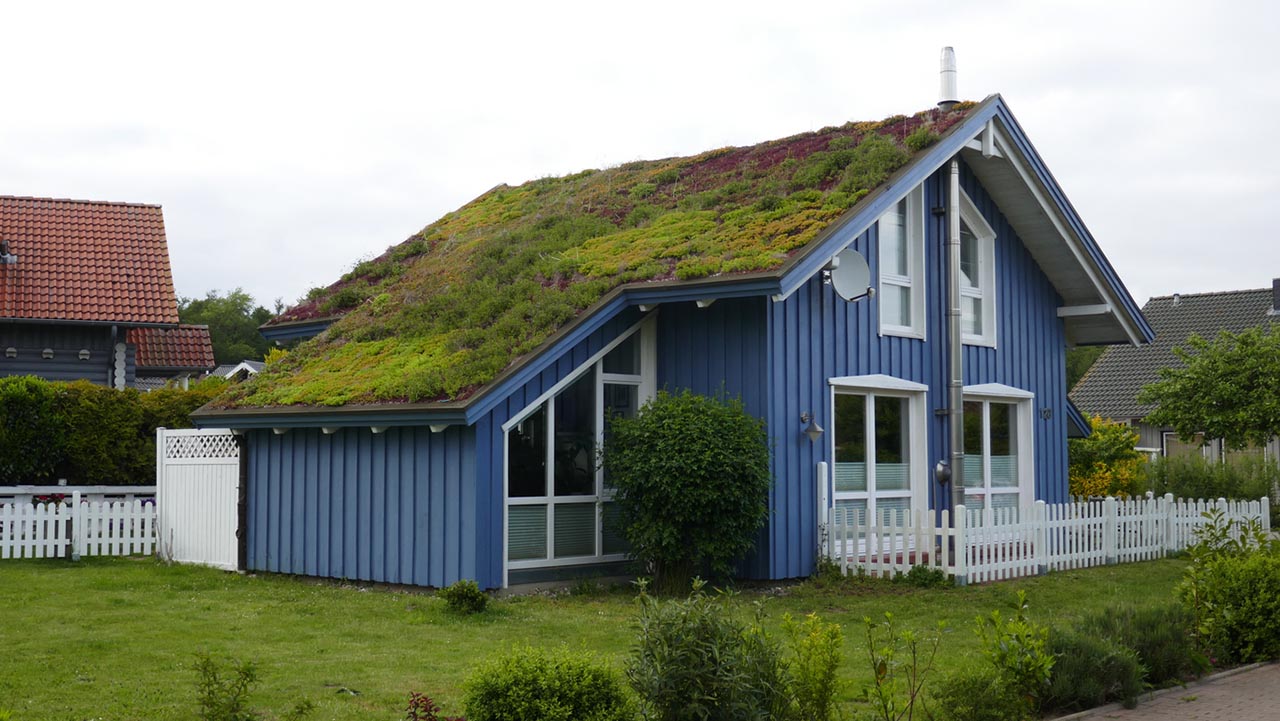Retain water in cities – ways to retain water
Long-term weather change forecasts clearly indicate that climate hazards (such as precipitation or strong winds) will increase in both intensity and frequency. Already, flooding, damage to infrastructure or traffic problems regularly affect our cities. Action is needed – read on and learn about ways to retain water.
Meanwhile, cities are constantly expanding, at the expense of green spaces, leading to the hardening and sealing of biologically active areas. The ways of water retention are not known to everyone. In natural areas, almost all rainwater soaks into the ground, nourishes plants, evaporates and is retained in the soil. This process is called landscape retention.
In urban areas – covered by buildings, streets, pavements, squares and car parks – on average as much as 70 per cent of rainwater has to be discharged through highly efficient drainage systems. This leads to an irretrievable loss of rainwater. With increasing heat waves and long periods of drought, there is not enough water. The lack of well-functioning green areas, wetlands and reservoirs contributes to rising average temperatures in urbanised areas and makes heat waves even more troublesome for residents. On the other hand, excessive amounts of water during heavy rainfall are not able to be drained by urban drainage systems, resulting in flooding and waterlogging.
An effective solution to these problems is to increase landscape retention, not only by municipal administrators, but also by other entities operating within the city – companies, cooperatives, housing communities or, last but not least, the residents themselves. The synergetic effect will only be achieved by transforming our cities into so-called “sponge cities”, which will be equipped with numerous small and micro-scale retention facilities scattered throughout the urbanised area.
Water retention facilities include various types of ponds, rain gardens, green roofs and walls, and the collection of rainwater for domestic purposes, such as watering plants. The construction of permeable pavements through which water percolates into the ground is also very important for water retention.
It is also worth remembering that the simplest thing to do is to protect trees from damage and felling and to plant new ones where possible. Trees are the most effective water retainers and also act as humidifiers – one tree can evaporate up to 500 litres of water a day! A simple solution is also to stop mowing the lawn so often; taller grass, mowed 1-2 times a year, will retain much more rainwater. Of course, it is even better to replace the lawn with a flower meadow, which at the same time improves the aesthetics of the surroundings and contributes to promoting biodiversity in the city.
Later in this article we will discuss more complex solutions to encourage retention in urban areas.

Water retention methods for nature lovers – rain gardens
Rain gardens are plant compositions planted on properly prepared ground and designed to filter and retain rainwater in the landscape as much as possible.
Thanks to rain gardens, rainwater, instead of running off into the rainwater sewer system from the roof or other paved surface, is gradually absorbed and used by the plants; in addition, it is cleaned (e.g. of heavy metals, dust, aromatic hydrocarbons) by the plants’ root systems and a suitably selected substrate (expanded clay, sand).
Rain gardens can be established in the ground (in depressions in the ground, next to storm sewers or in areas immediately adjacent to paved surfaces), or they can be placed in boxes or containers on the ground surface. The realisation of a rain garden in a box is relatively simple and does not require specialist knowledge, and allows rainwater to be used and to decorate the neighbourhood of a building in an impressive way. It is also worth considering the realisation of an in-ground garden, which is cheaper to build and usually forms a more coherent part of the overall garden composition.
Diagram of a rain garden in a box
The Sendzimir Foundation has created numerous model developments that can serve as inspiration for those interested in this solution; they can be found on the map of sites favouring retention.
How to choose the right type of rain garden, how to build it step by step and what to look out for when caring for it can be found in the brochures: I like rain,, Sendzimir Foundation 2019; ; Rain garden in a container, Sendzimir Foundation 2018; Rain gardens in the ground. Construction manual, Sendzimir Foundation 2018
Retention basins – what are they and what are they used for?
A retention basin is a gentle depression in the ground where water temporarily collects. It can be covered with grass or planted with a composition of plants that tolerate temporary flooding and are drought-tolerant.
A basin requires more space than a rain garden, but is a slightly cheaper solution to build. It is easiest to create it on a plot with varied terrain by planting plants in one of the lowest depressions or creating such a depression, e.g. near a paved surface (access road or terrace), from which water will naturally flow.
The basin should be at least 5 m from the buildings to avoid the risk of water collecting near the foundations. If you want to create it closer, you will need to plan a foil-lined basin connected to a control sump. Before building it, the groundwater level should be checked. They should be at a depth of no less than one metre below the bottom of the basin excavation.
Diagram of the retention basin
How to build a retention basin can be learned from: Infiltration retention basin, Sendzimir Foundation 2018
Retention ponds – what is their function?
A pond is a reservoir filled with standing water throughout the year that retains and purifies water from surface runoff. The aquatic plants, which are an integral part of the pond, add to the natural character of the pond and, above all, aid the water filtration process.
The cost of such an establishment depends on its size. Typically, reservoirs are associated with large-scale water engineering structures, whereas they can also be small garden ponds.
It is worth considering building a pond in the garden if you have sufficient space. In order to ensure that the biological processes can take place properly to maintain good water quality, the pond should ideally have a capacity of at least 15-20 m3, with a minimum depth of 1 m. A reservoir can be created if we are able to bring water to it, e.g. from gutters or by providing surface run-off from higher ground. A pond can also be built where the groundwater level is high enough to prevent the creation of a basin or rain garden in the ground.
How to build a small naturalistic garden pond or pond step by step:: Naturalistic retention ponds, Sendzimir Foundation 2018
Rainwater tanks and their applications as one means of water retention
There are many options for collecting and using rainwater – from collecting it in a tank set up next to the house, to installing below ground water infiltration boxes or tunnels, to installations that collect the water and allow it to be used at home (e.g. for flushing toilets, laundry, watering the garden).
An easy-to-implement way to collect rainwater is to erect an above-ground tank next to the building to collect the water flowing down the (vertical) downpipe from the gutters around the roof.
Rainwater can be used to water plants in the garden and house, to irrigate ponds and also for cleaning work around the house (washing, rinsing). This not only prevents flooding of the surrounding area, but also saves money.
You can read more about the available solutions in: Nature-friendly space – good practices, Sendzimir Foundation 2018 or Wawer catches water, Sendzimir Foundation 2019.
Home water retention – permeable surfaces
The driveway to the house or garage, parking spaces, pavements and paths, which often occupy a large part of the plot, are most often made of impermeable materials (asphalt, concrete). The use of permeable paving around the house allows rainwater to seep into the ground and be stored. Such an investment prevents – depending on the location of the plot – either excessive drainage of the land or localised flooding.
Nowadays, more and more solutions are available to make the surface permeable on the one hand and strong and durable on the other. If, for example, you decide to use gravel for a garden path or grass for a parking space, you can use lawn grids made from recycled materials. These allow water to pass through, while stabilising the surface and making it resilient.
You can read more about available solutions and how to make impermeable surfaces yourself in: Nature-friendly space – good practice, Sendzimir Foundation 2018 or Methods of increasing water retention to the ground, Sendzimir Foundation.
Green roofs and everything you need to know about them
A green roof, i.e. a roof planted with vegetation, is a solution that is gaining in popularity. It is perfect for a private property – it will allow some of the rainwater to be retained on site, and in the case of larger areas, such as garages, it will also have a thermal insulation and fire protection function.
Relatively easy to set up yourself is the so-called extensive green roof, which is also simple to use. It can become part of a commercial building, a carport, a porch or even a cover for waste containers. Extensive roofs have a low substrate thickness (5-15 cm), can be established on both flat and sloping roofs and generally do not require maintenance.
Most green roofs require professional assistance during design and installation. For a new building, a green roof should be included in the construction project and in the application for planning permission. If you want to plant an existing roof, you need either a notification of construction work or – most often – a building permit. It is advisable to consult the relevant district office.
For more information, see Nature-friendly space – good practices, Sendzimir Foundation 2018.
If a green roof is too complicated for you to implement, it is always a good idea to plant the walls of buildings with climbing plants.
Author: Sendzimir Foundation (sendzimir.org.pl)
The text was written as part of the project “Hydrozagadka – how to win against drought?”






